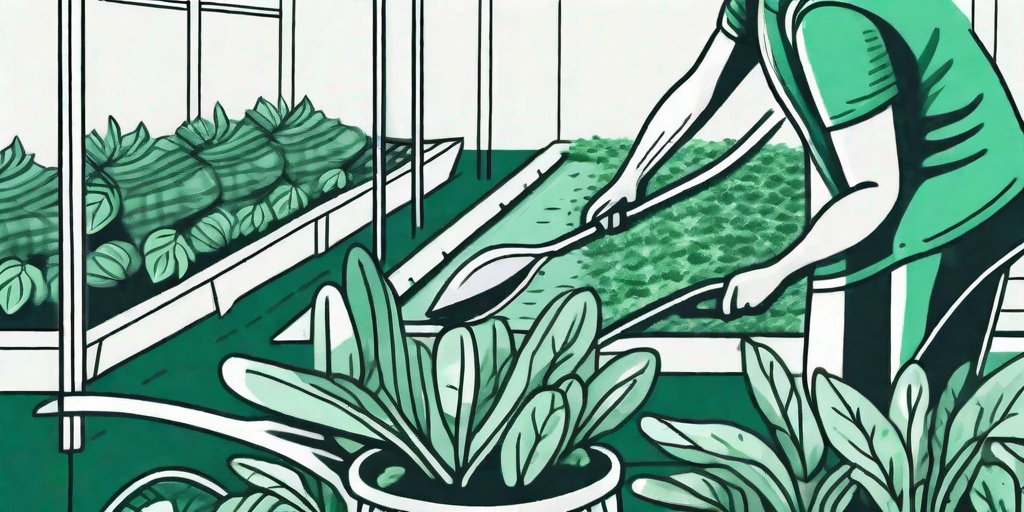
Welcome to the world of spinach! This leafy green has been a staple in diets around the world for centuries, and for good reason. Not only is it packed with nutrients, but it's also incredibly versatile in the kitchen. But have you ever considered growing and harvesting your own spinach? If not, it's high time you did! Let's dive into the wonderful world of spinach cultivation.
Why Grow Your Own Spinach?
First things first, why should you even bother growing your own spinach? Well, there are a few reasons. For starters, growing your own food can be incredibly rewarding. There's nothing quite like the satisfaction of harvesting your own crop, knowing that you nurtured it from seed to plate.
Secondly, homegrown spinach often tastes better than store-bought. It's fresher, and you can control the growing conditions to ensure your spinach is as healthy and delicious as possible. Plus, you can grow a variety of spinach that you might not find in your local grocery store.
Lastly, growing your own spinach is a great way to save money. Spinach can be a bit pricey at the store, especially if you're buying organic. But with a little time and effort, you can have a plentiful supply of spinach at your fingertips for a fraction of the cost.
Getting Started: Choosing Your Spinach
Before you can start growing your spinach, you need to decide what type of spinach you want to grow. There are three main types: savoy, semi-savoy, and flat-leafed. Savoy spinach has crinkly, dark green leaves and is often used in salads. Semi-savoy is a bit smoother and easier to clean, while flat-leafed spinach is the easiest to clean and is often used in packaged spinach products.
Once you've chosen your type of spinach, you need to decide if you want to start from seeds or seedlings. Starting from seeds is cheaper and offers a wider variety of options, but it also takes longer. Starting from seedlings is quicker and easier, but it can be more expensive and you have fewer varieties to choose from.
Regardless of what you choose, make sure to buy your seeds or seedlings from a reputable source. This will ensure that your spinach is healthy and free from disease.
Planting Your Spinach
When to Plant
Spinach is a cool-weather crop, which means it grows best in the spring and fall. You can start planting spinach as soon as the soil can be worked in the spring. In the fall, you can plant spinach about 6-8 weeks before the first frost.
Spinach can also be grown in the winter in milder climates, or in a cold frame or greenhouse.
Where to Plant
Spinach prefers a location with full sun to partial shade. It also needs well-draining soil. If your soil is heavy clay, you might want to consider growing your spinach in raised beds or containers.
Spinach also grows well in a wide range of pH levels, but it prefers a pH of 6.5-7.5. You can test your soil's pH with a soil test kit, available at most garden centers.
How to Plant
Plant your spinach seeds about 1/2 inch deep and 2-3 inches apart. If you're planting seedlings, plant them at the same depth they were growing in their pot.
After planting, water your spinach thoroughly. Keep the soil consistently moist, but not waterlogged. Spinach doesn't like to dry out, but it also doesn't like wet feet!
Caring for Your Spinach
Once your spinach is planted, it's time to care for it. This involves watering, fertilizing, and dealing with pests and diseases.
Water your spinach regularly to keep the soil moist. A layer of mulch can help retain moisture and keep the weeds down. Fertilize your spinach with a balanced vegetable fertilizer according to the package instructions.
Spinach can be affected by a few pests and diseases, including aphids, leaf miners, and downy mildew. Keep an eye on your plants and deal with any problems as soon as they arise.
Harvesting Your Spinach
The moment you've been waiting for: harvest time! You can start harvesting spinach as soon as the leaves are big enough to eat. This is usually about 6 weeks after planting.
To harvest, simply cut the outer leaves off at the base of the plant. Leave the inner leaves to continue growing. You can keep harvesting spinach until the plant starts to bolt, or produce seeds. This usually happens when the weather gets hot.
FAQs
Can I grow spinach indoors?
Yes, you can grow spinach indoors! You'll need a container that's at least 6 inches deep and a sunny window. You can also use grow lights if you don't have enough natural light.
How long does it take to grow spinach?
Spinach usually takes about 6 weeks to grow from seed to harvest. However, this can vary depending on the variety and growing conditions.
Can I grow spinach in the summer?
Spinach prefers cool weather and tends to bolt in the heat. However, there are some heat-tolerant varieties of spinach that can be grown in the summer.
Conclusion
And there you have it: a beginner's guide to harvesting your own leafy greens. With a little time and effort, you can enjoy fresh, homegrown spinach all season long. So why not give it a try? Your taste buds (and your wallet) will thank you!











